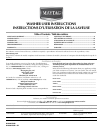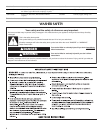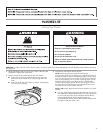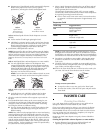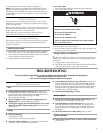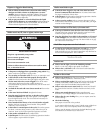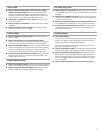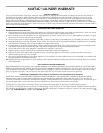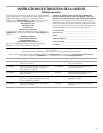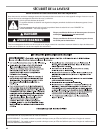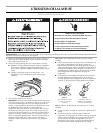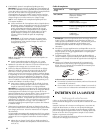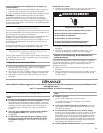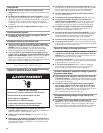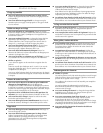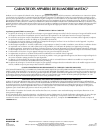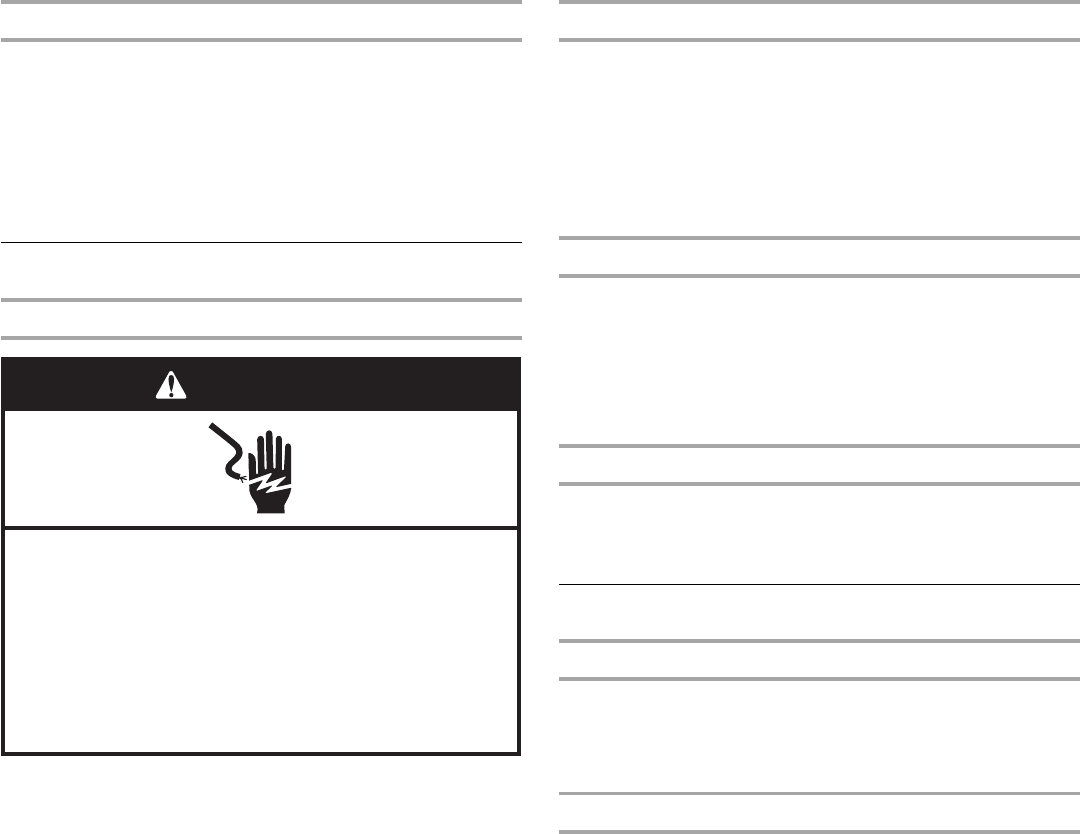
6
Dispensers clogged or bleach leaking
■ Did you follow the manufacturer’s directions when adding
detergent and fabric softener to the dispensers (on some
models)? Measure detergent and fabric softener. Slowly pour
into the dispensers. Wipe up all spills. Dilute fabric softener
in the fabric softener di
spenser.
■ Did you put powdered or color-safe bleach into the liquid
chlorine bleach dispenser (on some models)? Add powdered or
liquid color-safe bleach directly to the basket. Do not use the
chlorine bleach dispenser for color-safe bleach.
Washer Operation
Washer won’t run, fill, rinse or agitate; washer stops
Electrical Shock Hazard
Plug into a grounded 3 prong outlet.
Do not remove ground prong.
Do not use an adapter.
Do not use an extension cord.
Failure to follow these instructions can result in death,
re, or electrical shock.
WARNING
■ Is the power cord plugged into a grounded 3 prong outlet? Plug
power cord into a grounded 3 prong outlet.
■ Are you using an extension cord? Do not use an extension cord.
■ Is the indicator on the Timer knob properly lined up with a
cycle? Turn the Timer knob to the right slightly and pull to start.
■ Are the water inlet valve screens clogged? Turn off the water
and remove inlet hoses from the washer. Remove any
accumulated film or particles. Reinstall hoses, turn on water and
check for leaks.
■ Are both the hot and cold water faucets turned on? Turn on the
water.
■ Is the water inlet hose kinked? Straighten the hoses.
■ Does the water level seem too low, or does the washer appear
to not fill completely? The top of the agitator is much higher
than the highest water level. This is normal and necessary for
clothes to move freely.
■ Has a household fuse blown, or has a circuit breaker tripped?
Replace the fuse or reset the circuit breaker. If the problem
continues, call an electrician.
■ Is the washer in a normal pause in the cycle? The washer pauses
for about 2 minutes during certain cycles. Allow the cycle to
continue. Some cycles feature periods of agitation and soak.
■ Is the washer overloaded? Wash smaller loads.
■ Is the lid open? The lid must be closed during operation. Washer
will not agitate or spin with the lid open.
Washer won’t drain or spin
■ Is the drain hose clogged, or the end of the drain hose more
than 96" (2440 mm) above the floor? See “Connect Drain Hose”
for proper installation of drain hose.
■ Is the lid open? The lid must be closed during operation. Washer
will not agitate or spin with the lid open.
■ Is there excessive sudsing? Always measure detergent. Follow
manufacturer’s directions. If you have very soft water, you might
need to use less detergent.
Washer continues to fill or drain; cycle seems stuck
■ Is the top of drain hose lower than the water level in washer?
The top of the hose must be higher than the water level in the
washer for proper operation. See “Drain System.”
■ Does the drain hose fit too tightly in the standpipe, or is it taped
to the standpipe? The drain hose should be loose yet fit securely.
Do not seal the drain hose with tape. The hose needs an air gap.
See “Secure the Drain Hose.”
Wash/Rinse temperature not what I selected
■ Are the hot and cold water inlet hoses reversed? See “Connect
the Inlet Hoses” for more information. As your frequency of
loads washed increases, the water temperature may decrease for
hot and warm temperatures. This is normal.
Washer Results
Load too wet
■ Did you use the right cycle for the load being washed?
Select a cycle with a higher spin speed (if available).
■ Did you use a cold rinse? Cold rinses leave loads wetter than
warm rinses. This is normal.
Residue or lint on load
■ Did you sort properly? Sort lint givers (towels, chenille) from lint
takers (corduroy, synthetics). Also sort by color.
■ Did you overload the washer? The wash load must be balanced
and not overloaded. Clothes should move freely. Lint can be
trapped in the load if overloaded. Wash smaller loads.
■ Did you select the correct water level? The water level should
be correct for the load size. Clothes should move freely in the
water.
■ Did you use enough detergent? Follow manufacturer’s
directions. Use enough detergent to hold the lint in the water.
■ Did you line dry your clothing? If so, you can expect some lint
on the clothing.
■ Check the following:
Was paper or tissue left in the pockets?
Is your water colder than 60°F (15.
6°C)? Wash water colder than
60°F (15.6°C) may not completely dissolve the detergent.
Did you use the proper cycle time for the load? Reducing w
ash
time (duration) is another way to reduce lint.



